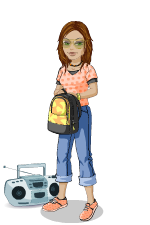Here are Stefanie's questions for the week..
Question 1—covers the Introduction (pages 1-23)
The introduction of this book illustrates concepts discussed in class, such as enframing, the creative class, and techne. We discussed how enframing is the essence of technology and considers the following question: what environment are you in and how do you send the message? How are or should things be framed? The path of technology gives way for the creative class to demonstrate techne—working on the arts of the mind. This book adds more to these previous questions. Page 11 states the following: “New technologies, increasingly ubiquitous, multi-purpose and ‘natural’ in terms of their interfaces, will help create a fourth dimension of communication in the same way that writing created a third—and this time not at the cost of a decrease in multimodality.” Is an increase in multimodality the right and most effective direction for communication in an interactive society? Will writing (a major form of communication) benefit from this theory and practice of multimodal communication? What are the implications of a fourth dimension of communication that stresses the multimodal “language of interior design” and more grammars of modes other than language?
Questions 2 and 3—cover Discourse and Design (pages 24-44)
On page 27, the following statement is made: Colour as mode is entirely distinct from language as mode. What are those distinctions? What are your thoughts about the idea of colour as mode? Another key point made is that language is still the mode that has potential for critique and analysis. How does one critique or analyze colour to come to a better understanding or articulate meaning?
Based on this new theory of multimodal communication—where our lives and professions are emerged within diverse, communicative modes—what terms best correlate with this new theory: de-skilling, re-skilling, or multi-skilling (41)?
Question Four—covers Production and Distribution (pages 66-110)
“The new technologies’ emphasis on multi-modality, three-dimensionality and interactivity can be seen as a return of many of the things that were lost in the transition from ‘orality’ to ‘literacy’, as a ‘secondary orality’, in other words” (92). What are the things that this statement refers to? What will be lost in this new multimodal world of communication—a world that suggests games becoming an art form? It is not about old content but the new mode of participating in society’s narratives—representation and imaginary identification towards participation, community, and co-creation (110).
Question Five—covers Issues for the multimodal agenda (pages 111-133)
The last chapter of this book states that the idea of multimodality is not a new phenomenon. Why should we be interested in a multimodal theory of communication or a greater degree of multimodality? Why move from a monomodal to a multimodal communicational landscape? Is this theory important because of its significance of representation and sending a powerful message to audiences? Or is multimodality concerned with the following: forms of cognition, possibilities for learning, new shapings of knowledge, the management of information, and the shaping of forms of human interaction?
Good stuff for us to think about!

